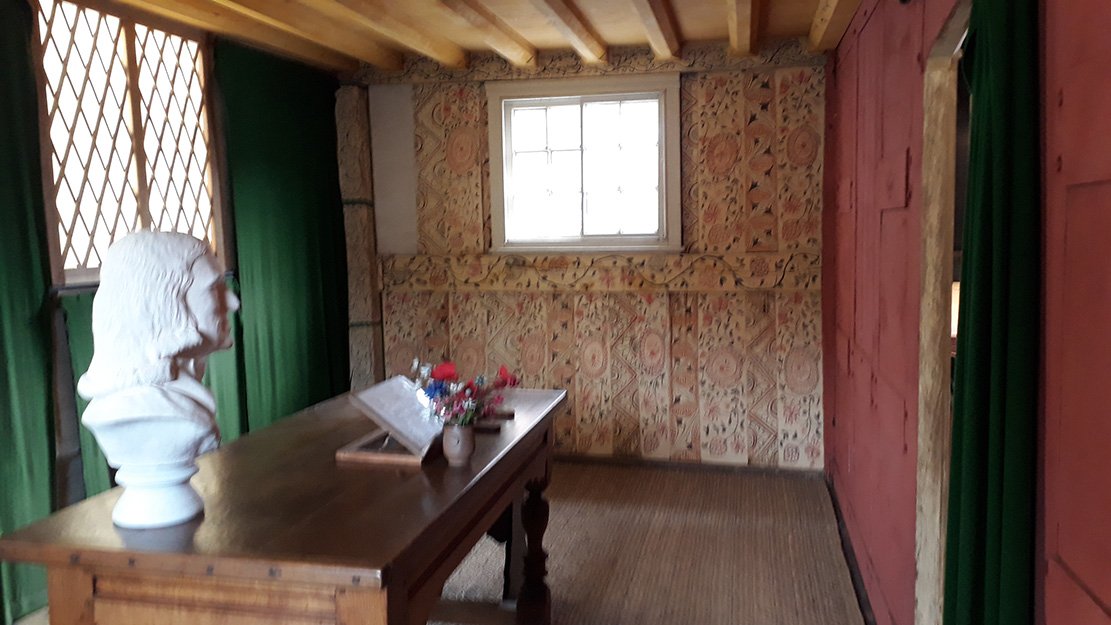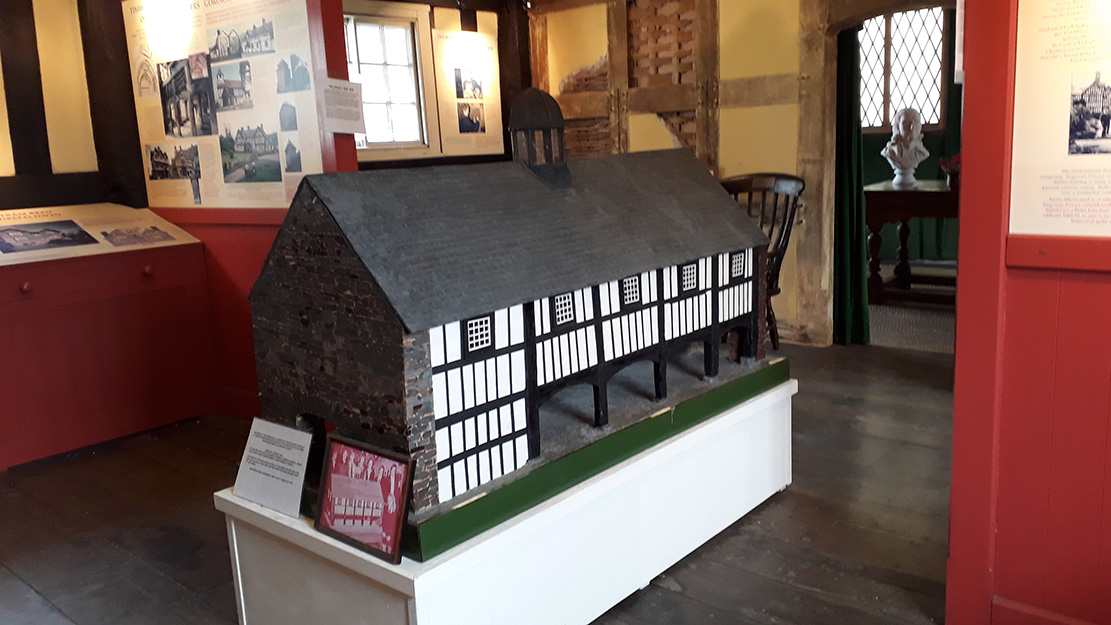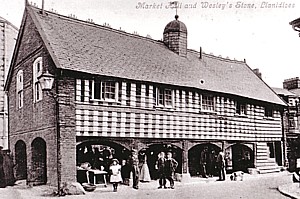Old Market Hall - Timber Frame Exhibition
Old Market Hall, Llanidloes SY18 6BN
Telephone: 01686 413053
The pride and symbol of Llanidloes, the Old Market Hall is the most distinctive building in the town. It is the only surviving timber-framed market hall in Wales. As recent tree-ring dating has proved, the present Hall was built at some time between 1612 and 1622. But some of the timbers used in its construction are older than the building, dating from the mid-16th century: they may well have been recycled from an earlier market hall which is known to have existed in Llanidloes.

Originally known as "the Booth Hall" from the market stalls or "booths" which stood beneath and around it, the hall was the focus of Llanidloes markets until the early 20th century. Its upper storey also played many other parts during its long career. Law courts were held there, and the area of the present staircase was divided off as the town "lock-up". Religious groups including Quakers, Baptists, Independents and Methodists used it for meetings, and John Wesley preached here several times; in 1749 addressing a large congregation from the "Wesley Stone" now outside the north-west corner. Later it became a store for flannel-an important mid-Victorian Llanidloes product-and then a "Working Men's Institute." The Old Market Hall is now the setting for a permanent display about the history, construction, use and future of some of Britain's most distinctive and beloved buildings-those built by the ancient but still-continuing method called timber-framing or "half-timbering".

Though focussing particularly on the many fine timbered buildings of the Llanidloes area, the display draws on examples from all over Britain to tell its story. It includes a visual guide to constructing a timber-framed building, and detailed computer inter-actives tracing every step in the process, from the felling of the first tree through to the decoration of the inside walls.
There are also sections about tree-ring dating; the destruction and restoration of timbered buildings and recent developments. Part of the interior has also been converted into a simulated timber-framed "room", recreated as it might have appeared in about 1600. This features authentically-made examples of timber-framing, wattle and daub and other in-fills, and wall painting and other "interior decoration".

